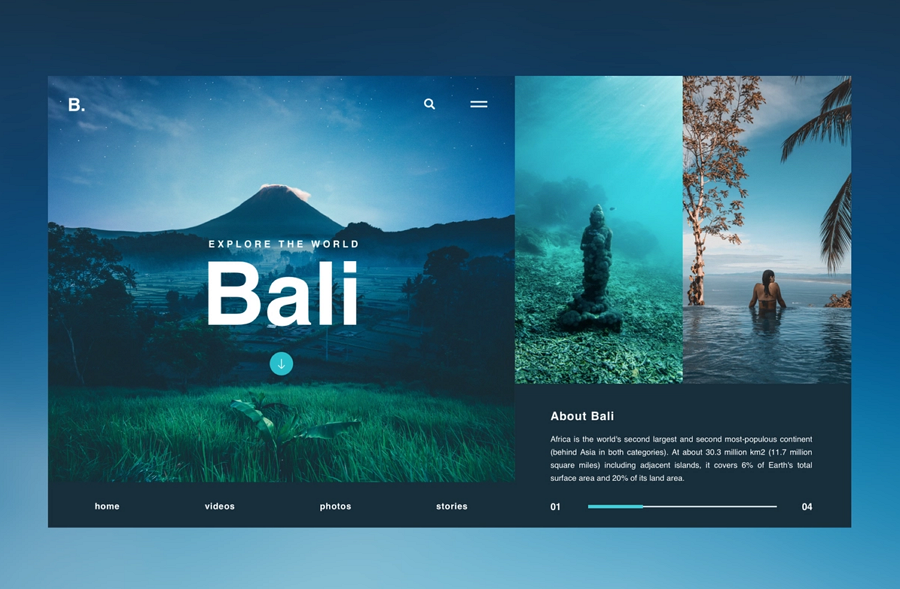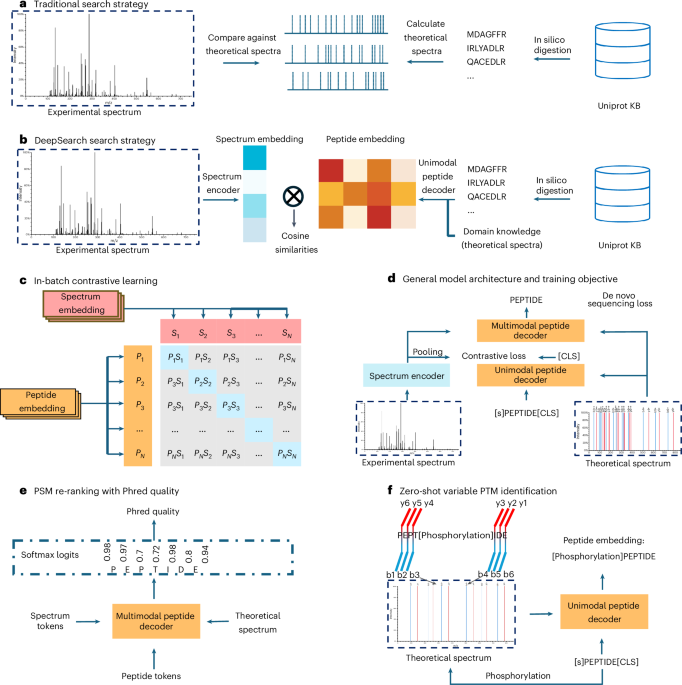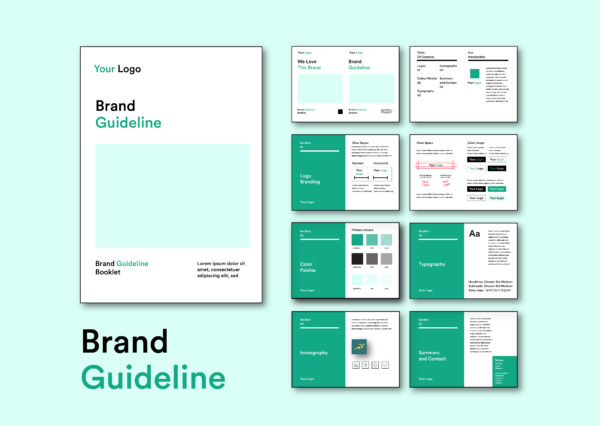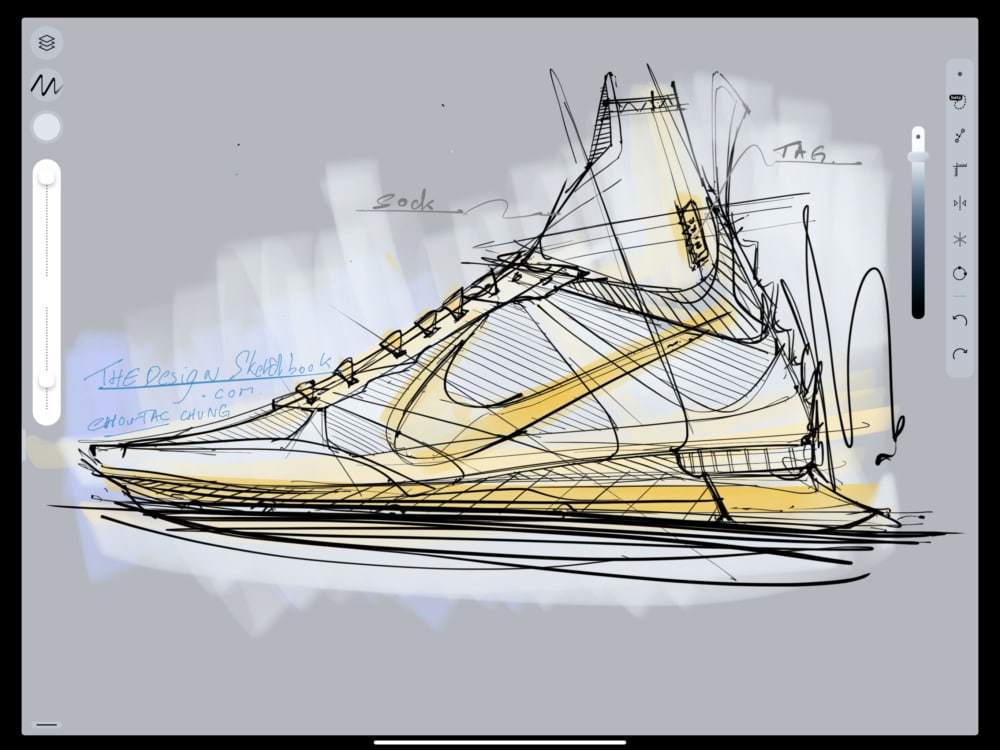Transform Your Creative Vision: The Ultimate Visual Design Course
Master the principles of visual communication and create stunning designs across all digital platforms
I've designed this comprehensive course to take you from understanding basic design concepts to creating professional-level visual content. Whether you're a marketer, content creator, entrepreneur, or aspiring designer, you'll develop the skills to communicate visually with impact and purpose.
Foundations of Visual Design Thinking
I've found that understanding the core principles of visual design is essential before diving into specific tools or techniques. In this foundational section, we'll explore the building blocks that make visual communication effective across all mediums.
The Science of First Impressions
Did you know that viewers form an impression of your design in just 50 milliseconds? That's faster than a conscious thought. I'll show you how to leverage this psychological insight to create designs that make a positive impact immediately, using principles from visual communication design that ensure your work connects instantly.
Visual impression formation happens in milliseconds, affecting all subsequent user interaction
Design Elements That Drive Impact
Throughout my design career, I've discovered that mastering these four fundamental elements creates the foundation for all successful visual communication:
flowchart TD
VD[Visual Design Foundation] --> C[Color Theory]
VD --> T[Typography]
VD --> G[Grid Systems]
VD --> H[Visual Hierarchy]
C --> C1[Emotional Impact]
C --> C2[Brand Consistency]
C --> C3[Accessibility]
T --> T1[Readability]
T --> T2[Personality]
T --> T3[Pairing Techniques]
G --> G1[Layout Structure]
G --> G2[Responsive Design]
G --> G3[Professional Polish]
H --> H1[Attention Guidance]
H --> H2[Information Flow]
H --> H3[Emphasis Control]
style VD fill:#FF8000,stroke:#333,stroke-width:2px,color:white
style C fill:#42A5F5,stroke:#333,stroke-width:1px
style T fill:#66BB6A,stroke:#333,stroke-width:1px
style G fill:#FFA726,stroke:#333,stroke-width:1px
style H fill:#EF5350,stroke:#333,stroke-width:1px
Color Theory
I'll guide you through color psychology, harmony principles, and how to build effective palettes that evoke specific emotions while maintaining brand consistency.
Typography
Learn how font choices dramatically affect readability and brand personality, plus practical techniques for pairing typefaces effectively.
Grid Systems
Discover how structured layouts create visual order and professional polish, with techniques that work across all design platforms.
Visual Hierarchy
Master the techniques that guide viewer attention exactly where you want it, creating clear pathways through your content.
Historical Context for Modern Design
I believe understanding design history provides crucial context for modern practice. We'll explore key movements like Bauhaus, Swiss Design, and Digital Modernism to see how they inform today's visual language. Using PageOn.ai's AI Blocks, we'll visualize these historical influences and how they translate to contemporary digital design.
From Design Theory to Digital Practice
Understanding theory is only valuable when you can apply it. In this section, I'll show you how to bridge the gap between theoretical knowledge and practical application across multiple platforms and tools.
Tool-Agnostic Design Skills
Rather than focusing on software-specific techniques that quickly become outdated, I'll teach you transferable skills that work across all design platforms. This approach has helped me adapt quickly to new tools throughout my career.
flowchart TD
DS[Design Skills] --> CT[Core Theory]
DS --> VP[Visual Principles]
DS --> DT[Design Thinking]
CT -.-> Figma[Figma]
CT -.-> Canva[Canva]
CT -.-> PP[PowerPoint]
CT -.-> PageOn[PageOn.ai]
VP -.-> Figma
VP -.-> Canva
VP -.-> PP
VP -.-> PageOn
DT -.-> Figma
DT -.-> Canva
DT -.-> PP
DT -.-> PageOn
style DS fill:#FF8000,stroke:#333,stroke-width:2px,color:white
style CT fill:#42A5F5,stroke:#333,stroke-width:1px
style VP fill:#66BB6A,stroke:#333,stroke-width:1px
style DT fill:#EF5350,stroke:#333,stroke-width:1px
style PageOn fill:#FF8000,stroke:#333,stroke-width:1px,color:white
When you understand the underlying principles, switching between Figma, Canva, PowerPoint, or PageOn.ai becomes seamless. I'll show you how to focus on design thinking rather than getting caught up in software-specific techniques.
Hands-on Learning Approach
I've structured this course around practical projects that reinforce theoretical concepts immediately. You'll get to apply what you learn through exercises designed to build muscle memory and confidence.
Learn
Understand the theory and principles
Apply
Practice through guided exercises
Master
Create real-world projects

Objective Evaluation Methods
One of the most valuable skills I've developed is the ability to evaluate designs objectively rather than subjectively. I'll teach you structured critique methods that help you improve your work systematically.
The CARP Evaluation Framework
- Contrast: Does the design create sufficient visual distinction between elements?
- Alignment: Do elements align in a way that creates order and structure?
- Repetition: Are design elements repeated consistently to create cohesion?
- Proximity: Are related elements grouped together logically?
Using PageOn.ai, you'll be able to quickly visualize these principles in action and see how making adjustments to each element affects the overall design. This immediate feedback loop accelerates learning and helps develop your design intuition.
Visual Design for Multiple Contexts
In today's multi-platform world, designs must adapt seamlessly across different contexts. I'll show you how to create cohesive visual experiences that maintain their integrity across various media and devices.
Responsive Design Fundamentals
Understanding how designs adapt across screen sizes is essential for creating professional work. I'll teach you the principles of responsive design that ensure your creations look great everywhere.
flowchart LR
D[Design] --> M[Mobile]
D --> T[Tablet]
D --> DT[Desktop]
M --> MC[Content Priority]
M --> MS[Simplified Layout]
M --> MT[Touch Targets]
T --> TC[Expanded Content]
T --> TL[Enhanced Layout]
T --> TI[Interaction Modes]
DT --> DC[Full Content]
DT --> DL[Complex Layout]
DT --> DI[Multiple Interaction Methods]
style D fill:#FF8000,stroke:#333,stroke-width:2px,color:white
style M fill:#42A5F5,stroke:#333,stroke-width:1px
style T fill:#66BB6A,stroke:#333,stroke-width:1px
style DT fill:#EF5350,stroke:#333,stroke-width:1px
Using visual presentations that adapt across devices requires thinking about content priority, layout flexibility, and interaction methods appropriate to each context. I'll show you how to approach this systematically.
Professional Application Areas
We'll explore how visual design principles apply to specific professional contexts, with tailored approaches for each medium:
Social Media Content
Learn to create scroll-stopping visuals that capture attention in crowded feeds. I'll show you how to balance eye-catching design with brand consistency across platforms.
Marketing Materials
Discover how strategic visual hierarchy drives conversion in marketing assets. We'll explore techniques for guiding viewers toward specific actions.
Brand Communications
Master the art of visual consistency that builds recognition and trust. I'll share methods for maintaining brand integrity across diverse materials.
Presentation Design
Learn to create visual presentations that support rather than compete with your message, using techniques that enhance audience understanding.
Context-Aware Visual Selection
Finding the right visuals for specific contexts can be challenging. I'll show you how to use PageOn.ai's Deep Search to discover and integrate relevant imagery that enhances your particular context and message.

The right visual in the right context dramatically increases engagement and understanding. Using advanced search capabilities lets you find precisely what you need without wasting hours browsing stock photo sites.
Building Your Design Process
A structured design process is the secret to consistent, high-quality results. I'll share my proven workflow that takes you from initial concept to polished final design.
Establishing a Repeatable Workflow
Over my years in design, I've refined a process that works for projects of all sizes. This systematic approach ensures nothing gets overlooked and helps maintain quality even under tight deadlines.
flowchart LR
R[Research] --> D[Define]
D --> I[Ideate]
I --> P[Prototype]
P --> T[Test]
T -->|Iterate| I
T --> F[Finalize]
style R fill:#FF8000,stroke:#333,stroke-width:1px,color:white
style D fill:#FF8000,stroke:#333,stroke-width:1px,color:white
style I fill:#FF8000,stroke:#333,stroke-width:1px,color:white
style P fill:#FF8000,stroke:#333,stroke-width:1px,color:white
style T fill:#FF8000,stroke:#333,stroke-width:1px,color:white
style F fill:#FF8000,stroke:#333,stroke-width:1px,color:white
This design thinking process applies to everything from creating a simple social media post to developing a comprehensive brand identity. Each stage builds on the previous one, creating a solid foundation for your design decisions.
The Branding Process
Creating effective brand identities requires a specialized approach. I'll walk you through my complete branding process from research to delivery:
1. Research & Discovery
- Competitor analysis
- Target audience definition
- Brand positioning opportunities
- Market trends evaluation
2. Strategy Development
- Brand personality definition
- Core values identification
- Messaging framework creation
- Visual direction exploration
3. Visual Identity Creation
- Logo design & variations
- Color palette development
- Typography selection
- Supporting visual elements
4. Implementation & Delivery
- Brand guidelines documentation
- Asset creation & organization
- Implementation examples
- Handover & training

Mood Boards & Visual Direction
Creating effective mood boards is an essential skill for establishing visual direction. I'll show you how to use PageOn.ai's Vibe Creation to quickly generate cohesive visual concepts that communicate your intended aesthetic.
Elements of an Effective Mood Board
Color Palette
Establishes emotional tone and brand feeling
Typography Samples
Demonstrates voice and personality
Imagery Style
Shows visual approach and aesthetic
Textures & Patterns
Adds depth and visual interest
UI Elements
Establishes interactive style
Inspiration Examples
References to guide direction
A well-crafted mood board serves as both a communication tool with stakeholders and a reference guide for your design process. Using PageOn.ai's tools, you can quickly generate and iterate on mood boards until you find the perfect direction.
Future-Proofing Your Design Skills
In an era of rapidly evolving AI tools, I want to help you develop design skills that remain valuable and complement rather than compete with automation.
Navigating AI-Driven Design Trends
AI is transforming design, but understanding how to leverage these tools while maintaining your creative edge is essential. I'll show you how to embrace automation while focusing on the uniquely human aspects of design.
I believe the most successful designers will be those who can collaborate effectively with AI tools while maintaining the critical thinking and creative problem-solving that machines can't replicate. This course will prepare you for that hybrid future.
Building Your Design Portfolio
A well-crafted portfolio is essential for showcasing your visual design skills. I'll guide you through creating showcase-worthy projects and documenting your process effectively.
flowchart TD
P[Portfolio Strategy] --> PS[Project Selection]
P --> PD[Process Documentation]
P --> PP[Presentation]
PS --> PSQ[Quality over Quantity]
PS --> PSR[Relevance to Goals]
PS --> PSD[Diverse Applications]
PD --> PDT[Thinking Process]
PD --> PDI[Iterations Shown]
PD --> PDO[Outcomes & Results]
PP --> PPV[Visual Consistency]
PP --> PPN[Narrative Structure]
PP --> PPA[Accessibility]
style P fill:#FF8000,stroke:#333,stroke-width:2px,color:white
style PS fill:#42A5F5,stroke:#333,stroke-width:1px
style PD fill:#66BB6A,stroke:#333,stroke-width:1px
style PP fill:#EF5350,stroke:#333,stroke-width:1px
Using PageOn.ai, you can quickly prototype portfolio concepts and visualize different presentation approaches before committing to final execution. This allows you to iterate efficiently and create a portfolio that truly stands out.
Portfolio Project Documentation Template
- Project Overview: Brief description and key objectives
- Challenge: Problem statement and constraints
- Process: Research, ideation, and development steps
- Design Decisions: Key choices and their rationale
- Outcome: Final solution and results achieved
- Reflection: Learnings and potential improvements
Human-AI Collaboration in Design
The future of design lies in effective collaboration between human creativity and AI capabilities. I'll show you how to use PageOn.ai's agentic features to transform your creative intent into polished visual realities.

By understanding how to communicate effectively with AI tools and knowing which aspects of design require human judgment, you'll develop a workflow that leverages the best of both worlds. This hybrid approach will keep your skills relevant even as technology evolves.
Practical Application and Career Advancement
The ultimate goal of this course is to help you translate your visual design skills into tangible career benefits. I'll show you how to apply what you've learned in various professional contexts.
Translating Skills to Career Benefits
Strong visual design skills can significantly increase your value across various industries. I'll help you understand how to communicate this value to employers or clients.
Design Skills Value Proposition
For Marketers
- Create campaigns that convert at higher rates
- Maintain brand consistency across channels
- Produce professional materials without design team
- Communicate more effectively with designers
For Entrepreneurs
- Build credible brand presence on limited budget
- Create professional marketing materials in-house
- Communicate brand vision effectively to contractors
- Make informed design purchasing decisions
For Content Creators
- Develop distinctive visual style across platforms
- Increase engagement through improved visuals
- Create cohesive content series with visual themes
- Stand out in crowded content spaces
For Educators
- Create engaging visual learning materials
- Improve information retention through design
- Develop professional-looking course content
- Communicate complex concepts visually
Industry-Specific Applications
Visual design principles can be applied across industries, but each field has unique requirements. I'll show you how to adapt your skills to specific professional contexts.
Using PageOn.ai, you can rapidly prototype industry-specific visual solutions without technical barriers. This allows you to experiment with different approaches and find what works best for your particular field.
Communicating Design Value
Being able to articulate the business impact of good visual design is crucial for career advancement. I'll show you how to connect your design capabilities directly to business outcomes and ROI.
The Business Case for Visual Design
- Brand Perception: Companies with consistent, professional visual design are perceived as 3.5x more trustworthy
- Conversion Rates: Well-designed landing pages can increase conversion rates by up to 200%
- User Engagement: Visually appealing content receives 94% more views and 80% more engagement
- Information Retention: Visual content is processed 60,000x faster than text and increases retention by 42%
- Employee Productivity: Well-designed internal documents and presentations reduce comprehension time by 36%
Note: These statistics are illustrative examples for educational purposes.
Transform Your Visual Expressions with PageOn.ai
Ready to put your new visual design skills into practice? PageOn.ai provides the perfect platform to quickly visualize your ideas, create professional designs, and communicate with impact—no complex software required.
Start Creating with PageOn.ai TodayYour Design Journey Begins Here
I've designed this visual design course to be more than just a collection of techniques—it's a comprehensive approach to visual thinking that will transform how you communicate ideas. By mastering these principles and applying them with tools like PageOn.ai, you'll be able to create designs that truly resonate with your audience.
Remember that great design isn't about following trends or using the most expensive software—it's about understanding fundamental principles and applying them thoughtfully to solve communication problems. The skills you'll develop in this course will serve you throughout your career, regardless of how technology evolves.
I encourage you to approach visual design with both creativity and analytical thinking. Experiment boldly, but also learn to evaluate your work objectively. With practice and the right guidance, you'll develop a design sensibility that sets you apart in any professional context. The journey to visual design mastery starts with understanding the visual communication for designers principles we've explored here.
You Might Also Like
Building Competitive Advantage Through Effective Speaking | Business Communication Strategy
Discover how effective speaking creates measurable competitive advantage in business. Learn strategic communication frameworks, crisis response techniques, and visualization tools for organizational success.
Multi-Format Conversion Tools: Transforming Modern Workflows for Digital Productivity
Discover how multi-format conversion tools are revolutionizing digital productivity across industries. Learn about essential features, integration strategies, and future trends in format conversion technology.
Mastering the American Accent: Essential Features for Global Professional Success
Discover key American accent features for global professionals with visual guides to vowel pronunciation, rhythm patterns, and industry-specific applications for career advancement.
Breaking the Ice: Transform Your Opening Minute from Predictable to Powerful
Discover how to transform the first 60 seconds of your presentation from cliché to compelling with visual hooks, interactive strategies, and storytelling techniques using PageOn.ai.